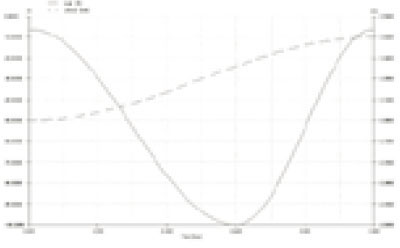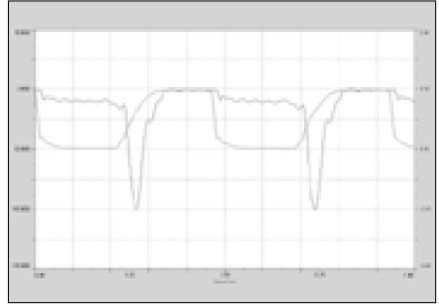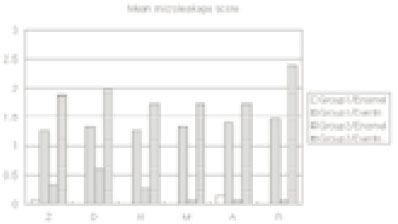J Korean Acad Conserv Dent.
2002 Mar;27(2):142-149. 10.5395/JKACD.2002.27.2.142.
Microleakage of microfill and flowable composite resins in class V cavity after load cycling
- Affiliations
-
- 1Department of Conservative Dentistiry, College of dentistry, Seoul National University, Korea.
- 2Department of Polymer Science & Engineering, Dankook University, Korea.
- 3Vericom Co., Ltd., Korea.
- KMID: 1987273
- DOI: http://doi.org/10.5395/JKACD.2002.27.2.142
Abstract
- Low-viscosity composite resins may produce better sealed margins than stiffer compositions (Kemp-Scholte and Davidson, 1988; Crim, 1989). Flowable composites have been recommended for use in Class V cavities but it is also controversial because of its high rates of shrinkage. On the other hand, in the study comparing elastic moduli and leakage, the microfill had the least leakage (Rundle et al. 1997). Furthermore, in the 1996 survey of the Reality Editorial Team, microfills were the clear choice for abfraction lesions.
The purpose of this study was to evaluate the microleakage of 6 compostite resins (2 hybrids, 2 microfills, and 2 flowable composites) with and without load cycling.
Notch-shaped Class V cavities were prepared on buccal surface of 180 extracted human upper premolars on cementum margin. The teeth were randomly divided into non-load cycling group (group 1) and load cycling group (group 2) of 90 teeth each. The experimental teeth of each group were randomly divided into 6 subgroups of 15 samples. All preparations were etched, and Single bond was applied. Preparations were restored with the following materials (n=15): hybrid composite resin [Z250(3M Dental Products Inc. St.Paul, USA), Denfil(Vericom, Ahnyang, Korea)], microfill [Heliomolar RO(Vivadent, Schaan, Liechtenstein), Micronew(Bisco Inc. Schaumburg, IL, USA)], and flowable composite [AeliteFlo(Bisco Inc. Schaumburg, IL, USA), Revolution(Kerr Corp. Orange, CA, USA)]. Teeth of group 2 were subjected to occlusal load (100N for 50,000 cycles) using chewing simulator(MTS 858 Mini Bionix II system, MTS Systems Corp., Minn. USA). All samples were coated with nail polish 1mm short of the restoration, placed in 2% methylene blue for 24 hours, and sectioned with a diamond wheel. Enamel and dentin/cementum margins were analyzed for microleakage on a sclale of 0 (no leakage) to 3 (3/3 of wall). Results were statistically analyzed by Kruscal-Wallis One way analysis, Mann-Whitney U-test, and Student-Newmann-Keuls method. (p=0.05)
RESULTS
1. There was significantly less microleage in enamel margins than dentinal margins of all groups. (p<0.05) 2. There was no significant difference between six composite resin in enamel margin of group 1. 3. In dentin margin of group 1, flowable composite had more microleakage than others but not of significant differences. 4. There was no significant difference between six composite resin in enamel margin of group 2. 5. In dentin margin of group 2, the microleakage were R>A=H=M>D>Z. But there was no significant differences. 6. In enamel margins, load cycling did not affect the marginal microleakage in significant degree. 7. In dentin margins, load cycling did affect the marginal microleakage only in Revolution. (p<0.05)
MeSH Terms
Figure
Cited by 1 articles
-
Effect of a new resin monomer on the microleakage of composite resin restorations
JH Bae, YK Kim, PY Yoon, MA Lee, BH Cho
J Korean Acad Conserv Dent. 2007;32(5):469-475. doi: 10.5395/JKACD.2007.32.5.469.
Reference
-
1. Carvalho RM, Pereira JC, Yoshiyama M, et al. A review of polymerization contraction: The influence of stress development versus stress relief. Oper Dent. 1996. 21:17–24.2. Feilzer AJ, de Gee AJ, Davidson CL. Quantitative determination of stress reduction by flow in composite restorations. Dent Mater. 1990. 6:167–171.
Article3. Kemp-Scholte CM, Davidson CL. Marginal integrity related to bond strength and strain capacity of composite resin restorative systems. J Prosthet Dent. 1990. 64:658–664.
Article4. Lee WC, Eakle WS. Possible role of tensile stress in the etiology of cervical erosive lesions of teeth. J Prosthet Dent. 1984. 52:374–380.
Article5. Goel VK, Khera SC, Ralston JL, Chang KH. Stresses at the dentinoenamel junction of human teeth-a finite element investigation. J Prosthet Dent. 1991. 66:451–459.
Article6. Grippo JO. Abfractions. A new classification of hard tissue lesions of teeth. J Esthet Dent. 1991. 3:14–19.
Article7. Qvist V. The effect of mastication on marginal adaptation of composite restorations in vivo. J Dent Res. 1983. 62(8):904–906.
Article8. Labella R, et al. Polymerization shrinkage and elasticity of flowable composite and filled adhesives. Dent Mater. 1999. 15:128–137.
Article9. Bayne SC, Thompson JY, Swift EJ Jr, et al. A characterization of first-generation flowble composites. J Am Dent Assoc. 1998. 129:567–577.10. Esafan AM, Estafan D. Microleakage study of flowable composite resin systems. Compend Contin Educ Dent. 2000. 21(9):705–712.11. Leinfelder K. New developments in composite resins. Dent Today. 1997. 16(4):4446–47.12. Rada RE. The versatility of flowable composites. Dent Today. 1998. 17(4):78–83.13. Burgess JO, Norling BK, Rawls HR, Ong JL. Directly placed esthetic restorative materials- The continuum. Compend Contin Educ Dent. 1996. 17(8):731–734.14. Miller MB. Restoring class V lesions part 2: Abfraction lesions. Pract Periodontics Aesthet Dent. 1997. 9(5):505–506.15. Rundle T, Cobb D, Vargas M. Effect of elastic modulus on microleakage of Class V restorations. J Dent Res. 1997. 76:(Abstract #1455).16. Heymann HO, Sturdevant JR, Bayne S, Wilder AD, Sluder TB, Brunson WD. Examining tooth flexure effects on cervical restorations : A two-year clinical study. J Am Dent Assoc. 1991. 122:41–47.
Article17. Leinfelder KF. Restoration of abfracted lesions. Compendium. 1994. 15(11):1396–1400.18. Going RE. Microleakage around dental restorations: a summarizing review. J Am Dent Assoc. 1972. 84:1349–1356.
Article19. Yap A, Stokes AN, Pearson GJ. An in vitro microleakage study of a new multi-purpose dental adhesive system. J Oral Rehabil. 1996. 23:302–308.
Article20. Ahlgren J, Owall B. Muscular activity and chewing force: A polygraphic study of human mandibular movements. Arch Oral Biol. 1970. 15:271–280.
Article21. Rigsby DF. Effect of axial load and temperature cycling on microleakage of resin restorations. Am J Dent. 1992. 5:155–159.22. Mandras RS, et al. The effects of thermal and occlusal stresses on the microleakage of the Scotchbond 2 dentinal bonding system. Dent Mater. 1991. 7:63–67.
Article23. Sakaguchi RL, et al. The wear of a posterior composite in an artificial mouth : a clinical correlation. Dent Mater. 1986. 2:235–240.
Article24. Lambrecht , et al. Quantitative evaluation of the wear of posterior dental restorations : four year results. J Dent Res. 1985. 03. 65(special issue):370. Abst. No. 1759.25. Hakimeh S, Vaidyanathan J, Houpt ML, Vaidyanathan TK, Hagen SV. Microleakage of compomer Class V restorations: Effect of load cycling, thermal cycling, and cavity shape differences. J Prosthet Dent. 2000. 83:194–203.
Article26. Hung CM, et al. Effects of thermocycling and occlusal force on the margins of provisional acrylic resin crowns. J Prosthet Dent. 1993. 69:573–577.
Article27. Dubois RJ, et al. Effects of occlusal loading and thermocycling on the marginal gaps of light-polymerized and autopolymerized resin provisional crowns. J Prosthet Dent. 1999. 82:161–166.
Article28. DeLong R, Douglas WH. An artificial oral environment for testing dental materials. IEEE Trans Biomed Eng. 1991. 04. 38(4):339–345.
Article29. Morin D, et al. Cusp reinforcement by the acid-etch technique. J Dent Res. 1984. 63:1075–1078.30. Pilo R, et al. Cusp reinforcement by bonding of amalgam restorations. J Dent. 1998. 26:467–472.
Article31. Pilo R. Comparison of microleakage for three one-bottle and tree multiple-step dentin bonding agents. J Prosthet Dent. 1999. 82:209–213.
Article32. Palamara D, Palamara JEA, Tyas MJ, Messer HH. Strain patterns in cervical enamel of teeth subjected to occlusal loading. Dent Mater. 2000. 16:412–419.
Article33. Davidson CL, de Gee AJ. Relaxation of polymerization contraction stresses by flow in dental composites. J Dent Res. 1984. 63(2):146–148.
Article34. Retief DH, Denys FR. Adhesion to enamel and dentin. Am J Dent. 1989. 07. 2:133–144.35. Yap AU, Wong ML, Lim ACY. The effect of polishing systems on microleakage of tooth-coloured restoratives. Part 2: Composite and polyacid-modified composite resins. J Oral Rehabil. 2000. 27:205–210.
Article
- Full Text Links
- Actions
-
Cited
- CITED
-
- Close
- Share
- Similar articles
-
- Comparison of microleakage after load cycling for nanofilled composite resin fillings with or without flowable resin lining
- Influence of flowable composite lining on microleakage at the gingival dentin margin
- Comparison of marginal microleakage between low and high flowable resins in class V cavity
- The effect of marginal microleakge according to thickness of flowable resin
- Microleakage of posterior packable composite resin at the gingival margins of class II cavities




